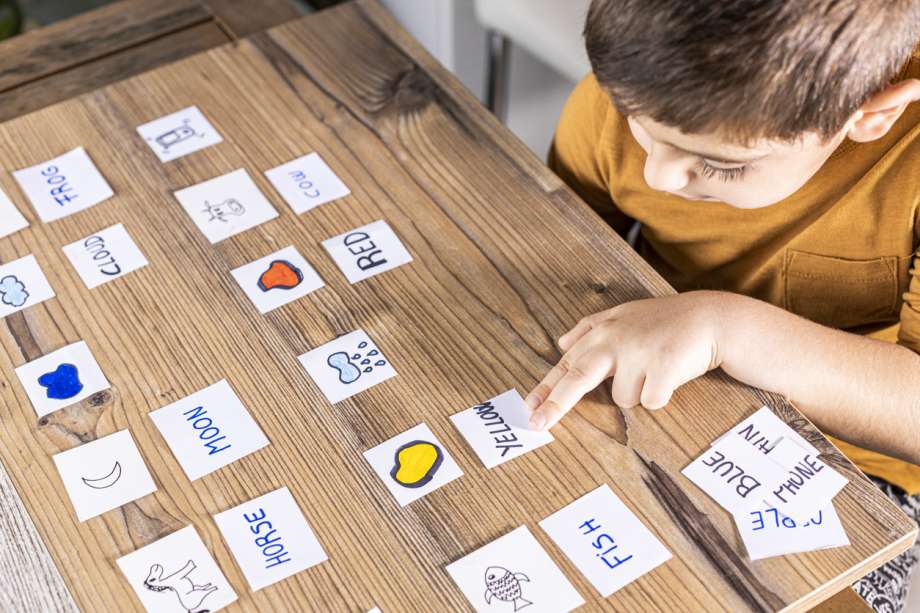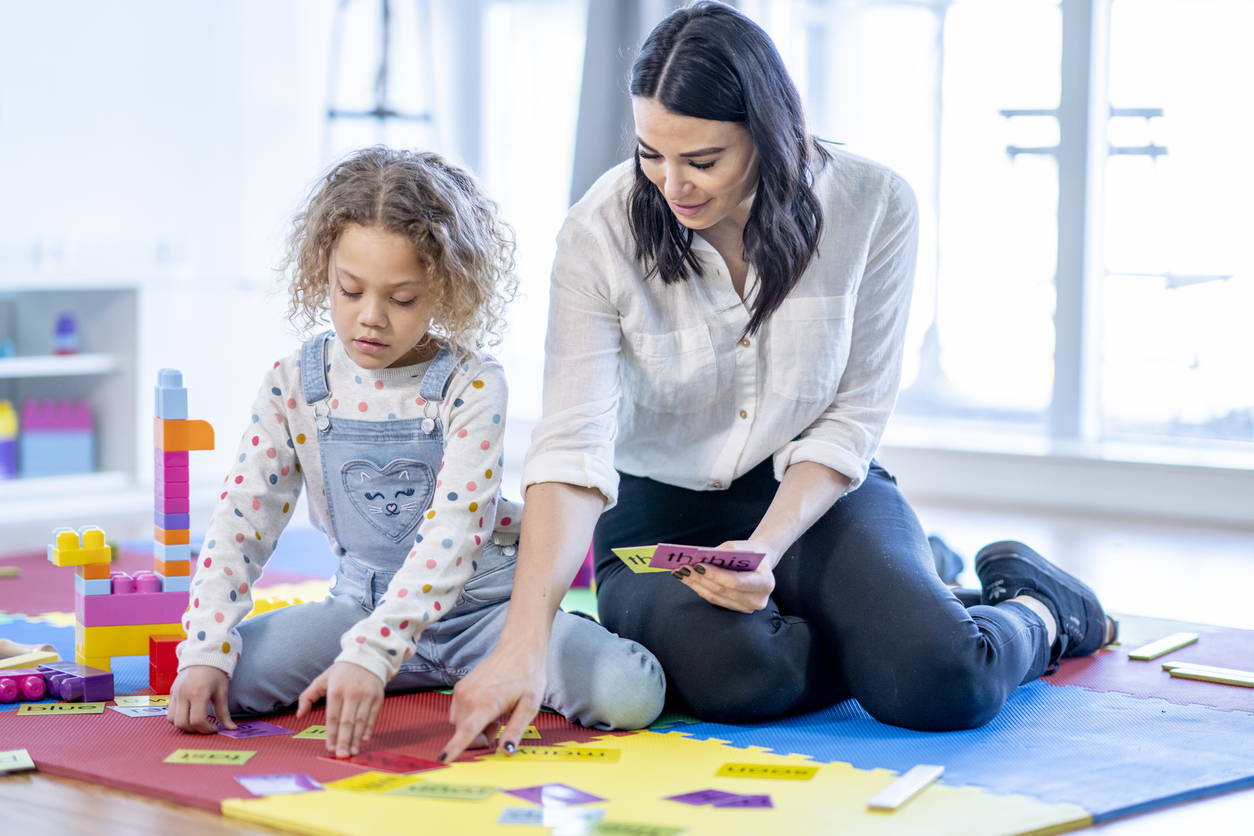Should I Teach My Child Sight Words To Prepare Them For Kindergarten?

Parents with children aged 5-6 often ask what their child should know to be prepared for kindergarten. One question I have received multiple times is if there is a list of words that children should learn to be ready for kindergarten.
In answering this question, I want to start with a word of caution. As the old saying goes, “Don't put the cart before the horse.” In this article, we will discuss where sight words and high-frequency words fit within the scope of an early reading program and where your time will be better spent when working with your early reader on emergent literacy skills.
Related: Is My Kid Ready for Kindergarten? Kindergarten Readiness Checklist
What Are Sight Words or High-Frequency Words?
When teachers talk about sight words, they are referring to the words children will come across most often in their reading. We also refer to sight words as high-frequency words (although there are differences between these two terms, they are often used interchangeably).
Most high-frequency words and sight words that children should know by 1st grade, 2nd grade, or 3rd grade are listed on The Dolch Sight Word Lists or the Fry Sight Word Lists.
By mid-to-late kindergarten, your child should have a bank of basic sight words they can read automatically. I like using “automatically” rather than, “by sight” when thinking about high-frequency words.
While the difference between the two ways of thinking about sight words may seem slight, there is a big difference. Your child should not be relying on memorization to read sight words.
Instead of memorizing words, students should be looking at words and recognizing sounds, letters, and other phonetic elements within words. With practice, this decoding and recognition of a word will take place in the blink of an eye, or with automaticity.
How to Teach Sight Words to Kindergarteners
If a child is learning to read high-frequency words by rote memorization only, this can be laborious and have little transfer to other reading skills. In addition, it is important to note that most (nearly 2/3 of the sight words listed on the Dolch list) are phonetically regular and the early reader can use their decoding skills to read and have access to these new words.
The remaining words that may have irregular phonetic elements, typically have some features within the word that are decodable. With quality phonics instruction, most of the irregular (or less common) phonics rules will be taught to your learner and they will be able to decode new words or irregular words in time.
Ultimately, children should understand the phonics principles that drive the way words are written rather than memorizing words by a visual cue or rote memorization. There is far more return on investment in teaching the underlying phonics rules than memorizing a list of sight words, especially for early readers.
Understand Phonemic Awareness First

In the years before kindergarten, your child will likely show attention and interest in language. This is the time your child is developing phonological awareness. Phonological awareness provides a strong foundation for reading development. It is the ability to recognize, work with, and manipulate sounds in spoken language.
For your emergent reader, a focus on phonemic awareness is crucial. This will set the stage for your learner to understand the principles taught in phonics instruction in the coming year. Using flashcards, or memorizing long lists of words will not set your child up for success in reading.
A focus on rote memorization of words (sight word flashcards, kindergarten sight word lists, worksheets that promote memorization) does not benefit your child’s reading development in the same way that providing engaging phonemic awareness opportunities and quality phonics instruction will.
Start your literacy journey with a focus on phonemic awareness, reading aloud to your child, and providing language-rich experiences. Work towards building an understanding of the alphabetic principle as a goal for getting your pre-K learner ready for the school year.
Remember, The English Language Is Logical
There is a misconception that the English language is full of illogical rules and difficult spelling patterns, and for that reason, some words must be memorized to be learned. If there is one thing I hope you walk away from this article knowing, it is that the English language is not chaotic, rather it has a defined set of rules.
When we teach children words and word rules (through quality phonics instruction), children will better understand how to decode words. Through good instruction and practice, learners will build a bank of sight words that they can read easily, and decode quickly.
When English language rules are systematically taught, your child will have the key to unlock multiple words. This sets your child up to become a skillful reader.
There are other added benefits of focusing on phonics instruction rather than rote memorization, such as learners who understand the rules of the English language becoming strong spellers and also enriching their vocabulary development as they begin to understand prefixes, suffixes, root words, and even Greek and Latin meanings.
Decoding Regular and Irregular Words with Kindergartners
Some English words are easy to sound out, for example, the word cat (/c/ /a/ /t/). If an early reader knows each sound in the word cat, they should be able to break the word up and sound it out successfully. Other words need further phonics instruction to decode correctly. For example, a high-frequency word in kindergarten is /for/.
If you sound out the individual letters in the word for (/f/ /o/ /r/) you will come up with a word that sounds closer to /far/ than /for/. This is because of the r-controlled vowel.
Children will eventually learn that when they see /or/ together, the /r/ will change the sound of the /o/. Then, instead of looking at the word /for/ as individual letters to decode, learners will use their phonics knowledge (connected to r-controlled vowels) to break up the word /for/ like, /f/ /or/ when decoding.
You can see that as children are taught phonics rules, they become better decoders and, with practice, quicker decoders. The more your kindergartner sees high-frequency words and decodes them, their speed and recognition abilities will increase. Students will begin to see the word /for/ and other common sight words and their braids will decode it automatically because they have worked with, read, and understand the principles of phonics connected to the word.
Where Do Sight Words Fit Into An Early Reading Program?

Let’s think a little more about the last example of a common kindergarten sight word. The word /for/ is a good example of a sight word or high-frequency word because learners will see it often in text, and they will likely know the alphabetic principle by the time they are working to read this word (they will know the /f/, /o/, and /r/ sounds).
On a student's path to reading, Linda Farrell, Michael Hunter, and Tina Osenga (2019) suggest, “Teaching 10–15 pre‐reading high-frequency or sight words only after students know letter names, but before they start (more in-depth) phonics instruction.”
This focus on waiting until students learn the letters and their names will help early readers not become frustrated as they understand letters, sounds, and word parts of the high-frequency words presented.
In short, teaching sight words, couched in phonics instruction, can be a tool for children as they learn to read. As they continue to receive quality phonics instruction and study language, the reasons (and rules) for understanding how to decode irregular words will be explained.
Examples of Sight Words For Kindergartners and Early Readers:
Here are some of the most common first sight words for kindergartners to learn.
- To
- And
- Of
- Was
- You
- For
- Is
- The
- A
- I
- In
- We
- He
- She
- They
- But
- All
How Many Sight Words Should Kids Know Before Kindergarten?
You may have heard that a child needs to learn anywhere from 100-300 high-frequency or sight words by the end of first grade. While it is true that teachers aim for the automaticity of high-frequency words, and that this automaticity helps the child when reading, this does not mean children should be memorizing hundreds of words or focusing too much time on sight word games or worksheets.
Instead, pre-school and kindergarten students should be building their sight word knowledge through quality instruction and proritizing phonetic concepts and rules over individual word memorization. As they do this, their bank of sight words will increase naturally.
Reading Automaticity vs. Rote Memorization
As Beth Villani suggests, “following a systematic scope and sequence for teaching phonics patterns and providing enough practice for each new letter pattern is critical.” This instruction and practice will help students build a bank of known words (and word families) that they can access quickly when reading.
Automaticity in reading, or the ability to quickly and accurately recognize and decode words, comes from strong core instruction that includes phonological awareness and phonics. By the end of first grade, with proper instruction, your child should have a large bank of words they know based on their instruction, word work, repeated exposure, and practice.
If you are seeing long lists of sight words for your student to memorize, large stacks of printable flashcards coming home, assigned basic sight word lists, or sight word worksheets that have more to do with memorization than phonics instruction, this would be a red flag that far too much focus is being placed on recall or memorization and not enough on phonics instruction.
Conclusion: Developing A Skilled Reader in Kindergarten
The question parents should ask at this early reading stage is not: “How many words should I teach my child before Kindergarten?”
A better question is, “How can I ensure the appropriate instruction takes place that includes phonological awareness and phonics instruction, so my student can set the stage to become a skilled reader?”
While some high-frequency or sight words may be taught to your child in the coming year, this focus should be a minimal part of an overall reading program.
As children become more confident with their decoding skills, begin to learn phonics rules, and have repeated exposure to words in a language-rich environment, they will find greater automaticity and their sight word and high-frequency word confidence will increase. They will also better understand the conventions of English which will prove far more valuable than memorizing lists of words.
For more resources on teaching sight words to pre-K and kindergarten students, check out these 5 Activities to Practice Sight Words with Kids.

